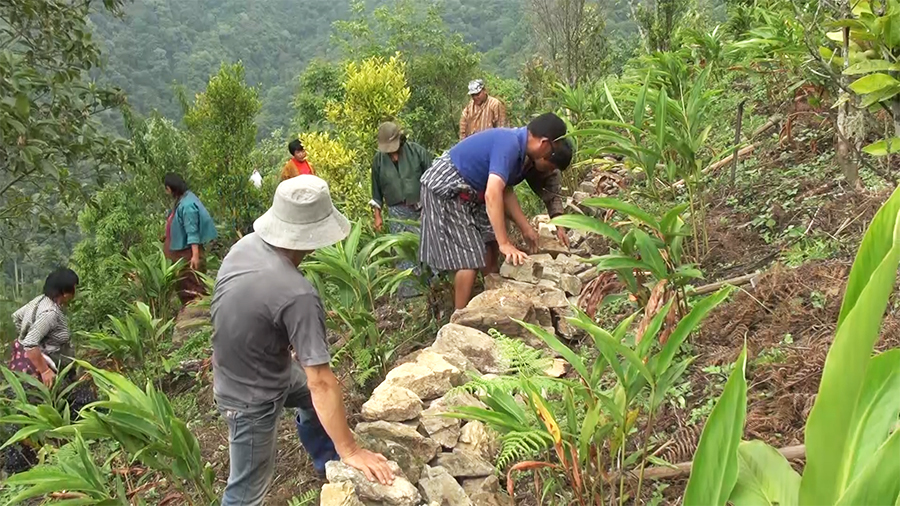
Working in the fields has been a challenge for the farmers of Labar village in Pema Gatshel. This is because most of the farmlands are steep making it challenging to farm. As a result, people left their lands fallow. But this is not the case anymore. Through a soil and land management project, the farmers have been encouraged to revive their fallow lands and grow more crops.
 These days, the farmers of Labar village are busy planting the saplings of a fodder plant called the Pakchong Napier, on the steep areas. The plants help control water and soil erosion. Moreover, stone bunds or walls have also been laid to stop the erosions.
These days, the farmers of Labar village are busy planting the saplings of a fodder plant called the Pakchong Napier, on the steep areas. The plants help control water and soil erosion. Moreover, stone bunds or walls have also been laid to stop the erosions.
Farmers say, in the past, all the nutrients and manure were washed away from the soil whenever it rained.
“After planting the fodder, it develops terraces making it easier for us to work,” said Thinley Wangdi, a farmer.
“I could not cultivate anything on my land because there were many stones on it. But now, we have been instructed to pick the stones and construct stone bunds. I have planted cardamom and other fruit trees,” said Jigme Choden, another farmer.
The land management work started last year and it will end next month. Although the project has yet to be completed, farmers are already reaping the benefit.
“In the past, I left this land fallow. We could not work as it was steep. Later, we planted fodder. Now we have even cultivated cardamom and other crops,” said Mitse Dorji, a farmer.
The soil and land management project is expected to enhance the farmland of 48 households in Labar village.
In addition, the project also provides fruit trees for free to the farmers.
The GEF Small Grants Programme implemented by the UNDP Bhutan and the government supported the project worth 24,000 US dollars which is around Nu 1.96 M.
A similar kind of project is underway in Bongmaan village in Pema Gatshel.
Thinley Dorji, Pema Gatshel
Edited by Tshering Zam










